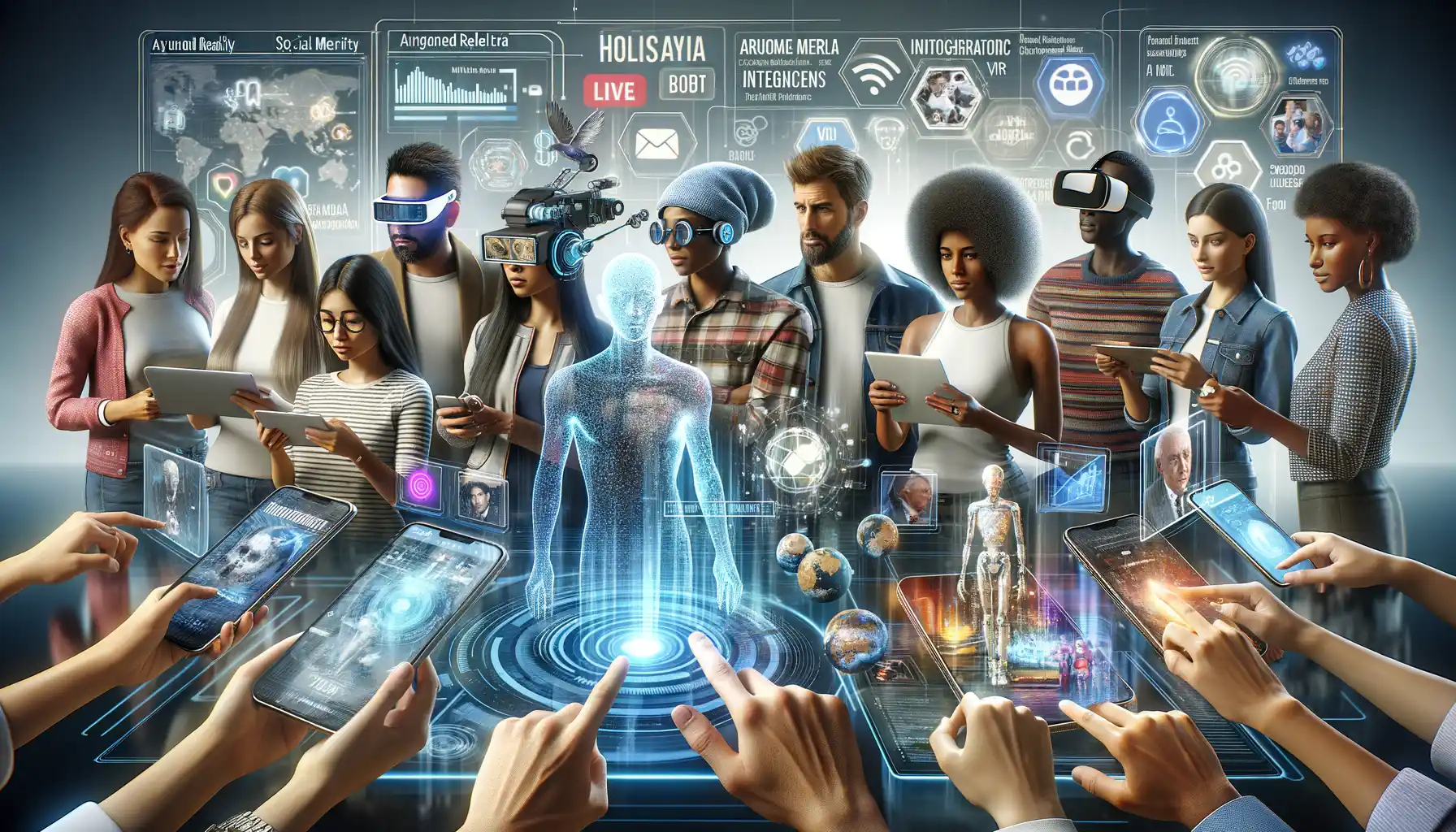How Social Media is Transforming News Consumption
The Shift from Passive Viewing to Active Engagement
Gone are the days when people simply tuned in to the 6 PM news. Today, the way we consume news has been completely upended by social media. Instead of waiting for a trusted anchor to deliver the headlines, audiences now scroll, share, and even debate the news in real time. It’s like switching from a one-way street to an unpredictable, buzzing freeway. News no longer just informs—it engages.
Social media platforms like Twitter and Instagram have turned everyone with a smartphone into a micro-journalist. Did something happen at a protest? A citizen livestreams it before a single reporter gets there. Is a government official making waves with a controversial statement? Someone screenshots it and sparks a global conversation in minutes.
- Speed: Breaking news spreads faster than wildfire.
- Interaction: Readers can comment, react, or even confront journalists directly.
- Personalization: Algorithms ensure you’re fed stories that align with your interests—or your biases.
This active participation means audiences aren’t just consuming—they’re co-creating the narrative. But with this remarkable transformation comes a flood of complexity. How do you know what’s credible when your feed feels like a chaotic news ticker? That’s the challenge we all wrestle with.
The Role of Viral Content in Modern Journalism

When a News Story Becomes an Online Sensation
Picture this: a local human-interest piece suddenly skyrockets into global notoriety. A three-minute video of a baby panda sneezing, or a citizen-captured earthquake rescue, ripples across social feeds like wildfire. That’s the magic—and mystery—of viral content in journalism today.
Viral stories ride on a cocktail of emotions: joy, outrage, hope, or even humor. They’re not just about clicks; they spark conversations, ignite debates, and sometimes ignite action. Platforms like Twitter (or X), Instagram, and TikTok have rewritten the rules, where a single post can outperform traditional newsrooms in reach within hours. But let’s pause here—what makes content go viral?
- Emotionally charged narratives: Stories that make us laugh, cry, or feel inspired tend to get shared more.
- Visual storytelling: Think striking images, memes, or short punchy videos that can convey a message faster than words could.
- Relatability: Posts that feel personal, like they’re speaking directly to your experience, are irresistible.
The Tension Between Viral Reach and Depth
Here’s the catch: while viral content spreads like dandelion seeds in the wind, it often faces criticism for being too shallow or sensational. Remember *that* dress—is it blue and black or white and gold? While millions debated its color, other critical news got buried under the noise.
That said, it would be naive to dismiss the power of virality altogether. Take Greta Thunberg’s scathing speeches turned into trending hashtags—they’re proof that a viral moment can also ignite meaningful change. Social media users crave snackable content, but they’re also hungry for impact. Should modern journalism strike a balance here? It’s a swirling dance between substance and speed.
Challenges Faced by Traditional News Outlets

The Tug-of-War Between Tradition and Change
The world of traditional news isn’t just facing a gentle breeze—it’s battling a full-blown hurricane of challenges. One major concern? Declining audiences. Picture this: a family sitting around the TV, waiting for the 6 PM news. Now, fast-forward to today. That same family is glued to their smartphones, scrolling through Twitter or Facebook, where breaking news reaches them faster than you can say “Good evening.”
Another tough pill to swallow for traditional outlets is how social media platforms have stolen the show. Why wait for a polished news report when you can get live updates from an eyewitness’s TikTok video? These platforms, with their algorithmic wizardry, amplify content that’s trendy and clickable, often sidelining the detailed reporting traditional journalists pour their hearts into.
The Financial Squeeze
Money talks, and unfortunately, it’s not saying much to traditional media houses these days. Here’s why:
- Advertising revenue: Once a steady stream, is now a trickle as brands pour cash into digital ads.
- Subscription fatigue: Why pay a subscription if snippets and summaries are freely shared on social media?
In this wild, ever-changing landscape, traditional news outlets often feel like they’re playing catch-up, trying to win back relevance while standing on shaky ground.
Benefits of Social Media for News Broadcasting

Instant Reach and Real-Time Updates
Imagine breaking news traveling faster than the speed of light—well, that’s what social media feels like. Platforms like Twitter (now X), Facebook, and Instagram transform news broadcasting into a dynamic, two-way street. Journalists and broadcasters no longer need to wait for scheduled segments; they can deliver the latest updates in real time, often straight from the scene.
With a single click, breaking headlines reach millions. For instance, during unfolding events like natural disasters or major political shifts, social media offers live streams, eyewitness accounts, and quick updates—painting a vivid, multi-layered picture that traditional formats just can’t match.
- Speed: News spreads almost instantly to global audiences.
- Accessibility: Social media breaks down barriers, reaching people directly on their phones.
- Engagement: Audiences participate by commenting, questioning, and even shaping the conversation.
Empowering Voices and Building Communities
Social media also democratizes news, giving not just journalists but citizens a voice. Think of it as a virtual town square where everyone—from reporters to everyday users—can contribute their perspectives. Platforms allow minor stories to rise and amplify voices from marginalized communities that might otherwise go unnoticed.
What’s truly unique? News becomes interactive. A viewer doesn’t just consume content—they challenge it, share it, or add layers to the narrative. Remember that viral footage from a protest or an amateur video that sparked widespread debate? That’s the power of social sharing. News isn’t just broadcast anymore—now, it breathes, evolves, and connects.
Future Trends in Social Media and News Integration

The Rise of AI-Powered Personalization in News
Imagine waking up, scrolling through your feed, and finding a perfectly curated stream of breaking news that feels like it was handcrafted just for you. That’s not science fiction—it’s the direction we’re heading, thanks to the union of AI technology and social media. Platforms like Facebook and X (formerly Twitter) are already experimenting with machine-learning algorithms that predict what stories will grip you most.
These algorithms don’t just guess—they learn. What headlines grab your attention? What topics make you pause longer? The result is a hyper-personalized news experience tailored to keep you engaged. But here’s the catch: With such laser-focused feeds, will we start living in “news bubbles,” only seeing the world through narrow slices of information? Food for thought.
Interactive Storytelling and Citizen Journalism
Flip through Instagram Stories or TikTok, and you’ll notice something powerful—news isn’t just told by reporters anymore. It’s interactive, visual, and increasingly driven by users themselves. Picture this: A natural disaster unfolds, and instead of waiting for traditional outlets, citizens on the ground livestream updates, post geotagged photos, and share firsthand accounts.
This shift is transforming us from passive consumers to active participants. Innovations like:
- Augmented reality (AR) experiences that immerse viewers in breaking stories
- Live Q&A’s with journalists
- Polls and user-generated content campaigns shaping coverage
The lines between professional journalism and everyday storytelling are blurring, creating a dynamic, two-way dialogue.
